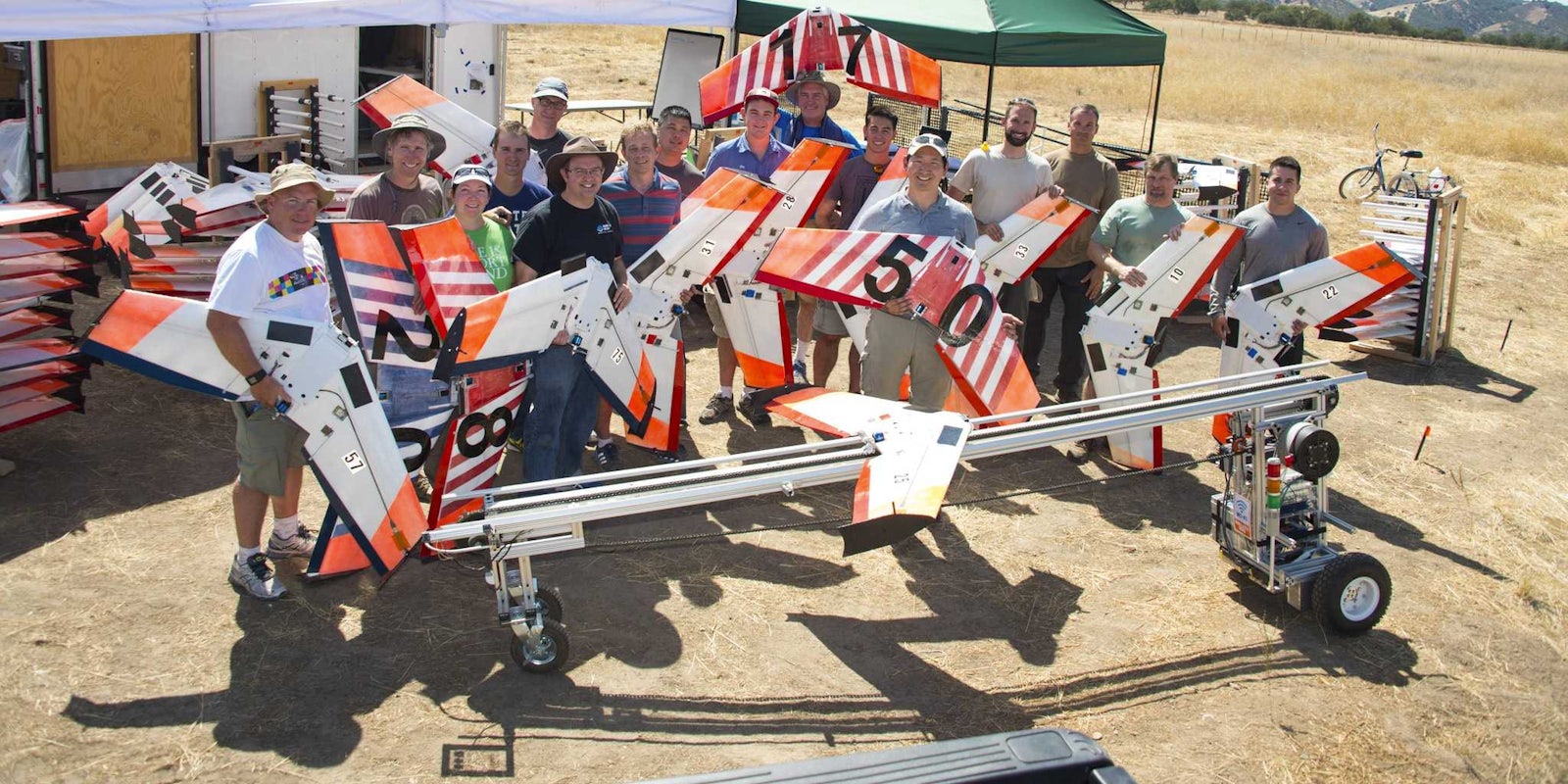You know what’s cooler than flying a drone? Flying a full fleet at once.
Not subject to the famously restrictive regulations on drone use in civilian airspace, researchers at the Naval Postgraduate School in Monterey, California, have developed a system that enables one person to pilot 50 drones through the sky at once. The drones are able to safely follow a leader by flying in line and also in a pattern that resembles the way bees forage in nature.
“The notion of the drone swarm is that the whole is greater than sum of parts,” project lead Dr. Timothy Chung told the Daily Dot over the phone. “Now you can use multiple assets to shave time off of a task, but you also have added bonus of being able to carry different sensors or to perform sub-missions simultaneously.”
The team is flying 50 models of an unmanned aerial vehicle (UAV) called the Zephyr 2, and each one costs $2,000. They are controlled not by conventional remote control radio waves but by high-powered Wi-Fi that’s blasted into the sky. That provides a means to communicate with the drones all at once without their becoming confused by the other radio noise that’s perpetually traveling through the air.
The Zephyr 2 is a propeller-driven flying-wing-style aircraft that Chung says enables his team “to do things over larger distances, at greater speeds, and for longer durations.” The team even built its own chain-driven launcher to make it a little easier to get so many drones in the sky:
The immediately obvious spheres to benefit from swarming drones are search and rescue and agricultural work. If the goal is to find a missing hiker in a state park, using more drones means they can cover more area simultaneously, and other drones in the fleet could double back later to revisit areas already scanned by other drones. “The fact that I’m looking at same place multiple times means I can improve the chance the lost person survives,” Chung said. “We’re already working with the U.S. Coast Guard to see how we could implement this for maritime search and rescue.”
For agricultural applications, members of a drone swarm might carry out different activities at once—some sampling the weather while others carry out spectroscopy analysis of the ground to detect blight and other crop maladies. All the while, the drones maintain a seamless awareness of where their mates are—like a bunch of Roombas cleaning a house together but for farming.
The team’s 50-drone flight has perhaps set a world record. A team in Sweden successfully flew 10 UAVs at once “about a decade ago,” said Chung, though it has “since moved on to other things. The notion of flying large scale in the U.S. is difficult due to the regulations. From that perspective, we have an advantage as one of few players who can actually play this game.”
Now that the Navy’s researchers have broken the swarm barrier, their future plans are to refine the algorithms that enable the technology to make them more efficient. Chung hopes that his team’s aerial experimentation will inform the Federal Aviation Administration as it considers opening up airspace for civilian or commercial drone use.
H/T New Scientist | Photo via Naval Postgraduate Academy Public Affairs Office



